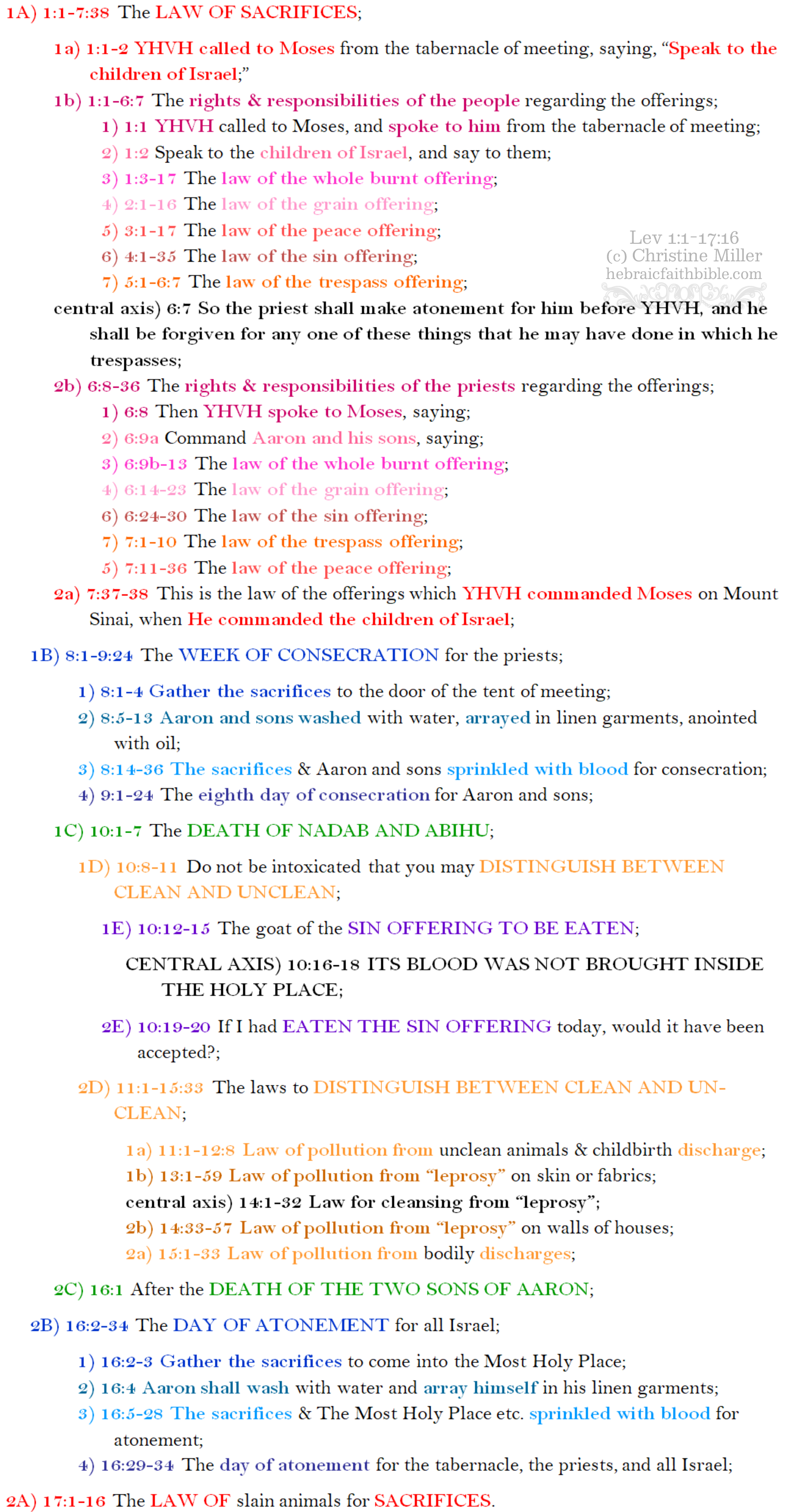Read Leviticus 16 and 17 at Bible Gateway.
The Hebrew paragraph divisions for today’s chapters are:
Lev 16:1-34 {p} The law of the Day of Atonement
Lev 17:1-16 {p} The law of the slain animal
Lev 16 describes the annual ceremony by which the High Priest brings the blood of the atonement into the Most Holy Place, to make atonement for the Most Holy Place, the tabernacle, the altar, the priests, and all the congregation of Israel. In fact, really the entire first seventeen chapters of Leviticus is about the Day of Atonement:
The central axis of this chiastic structure, is Moses telling Aaron that since the blood of the goat was not brought into the holy place, the goat should have been eaten. We only find out in chapter 16, that the blood of the goat that Moses was talking about, was only brought into the Most Holy Place once per year, on the Day of Atonement. The central axis is about the Day of Atonement!
In fact, the law of the sacrifices had to be taught first, so that the proper sacrifice could be brought on the Day of Atonement. Aaron and his sons had to be consecrated first, so that the High Priest could be the one to bring the blood into the Most Holy Place on the Day of Atonement. The laws to distinguish between clean and unclean had to be taught first, so that Israel would know what the LORD was talking about, when He said that the Day of Atonement ceremony was to make atonement for all of Israel’s uncleanness, as the LORD was in her midst.
“Atonement” is in Hebrew, kaphar, Strong’s H3722 (this is the same root that the Hebrew word for “mercy seat” comes from), kaph + pey + resh. In the ancient pictographs, the kaph is the open palm of blessing. The pey is the mouth, and can also mean open. It is also used for wound, as an opening of the body. The resh is the head of a man. The father lays his open palm on the head of his son to convey the blessing. The picture the ancient pictographs are painting of atonement, is of the Father’s open palm of blessing covering over the open wound (of the soul) of the man.
An English dictionary will reveal that the English word “atonement” comes from the Middle English “at one;” i.e. to bring two separate parties into harmony or unity! Heb 9 explains how Messiah fulfilled the Day of Atonement as both the perfect sacrifice, and as the High Priest of our Atonement, on the Day of Atonement!


















The father lays his open palm on the head of his son to convey the blessing. The picture the ancient pictographs are painting of atonement, is of the Father’s open palm of blessing covering over the open wound (of the soul) of the man.
What a pearl if knowledge…thank you